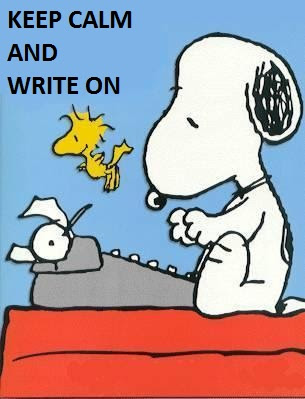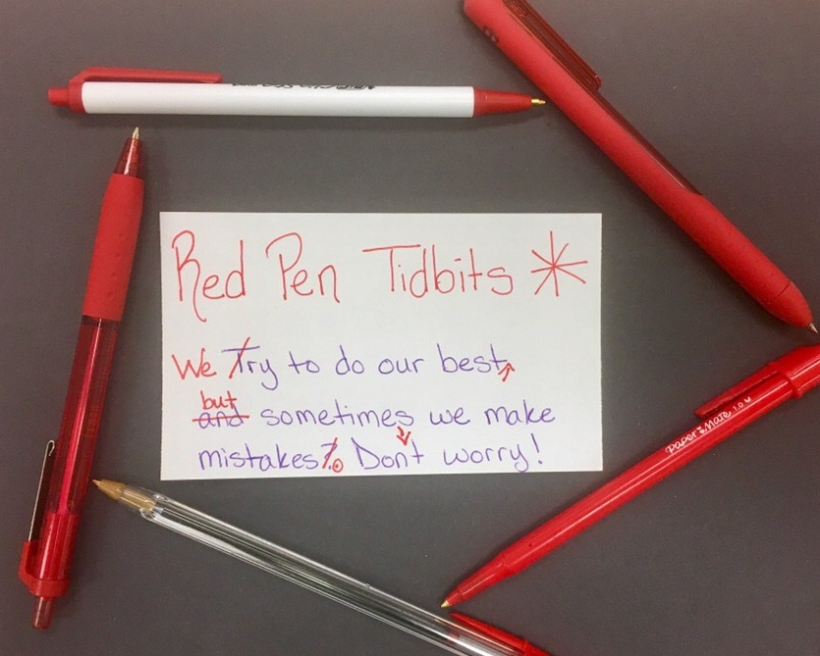The Writing Process.
We’ve all heard of it. We know what it is. We know why it’s used. We know that it’s often the bane of our existence. Why does the combination of those three words fill us with dread? Shouldn’t they excite us and fill us with wonder? They are here for us, the writers, after all.

Not every writer follows the same process when writing. One writer may take different paths depending on the piece, as well. This is not going to be a one-size-fits-all solution, by any means. I am simply going to show you my writing process – the same process that I teach my students. It works for me. It works for most of them. Your job is to grab your writer’s toolbox and find what works for you.
1. Prewriting
Prewriting is the best part of the writing process. (Although, some may argue that it’s the second or third best — we’ll get to those reasons later.) Why is it the best? This is the moment when you have an idea. This is the moment when you choose to take that idea and let it blossom into something glorious. This is your moment.
How are you supposed to pre-write an idea? How are you supposed to take that seedling and help it bloom? I like to teach this in three steps (and you can keep all your ideas in your writer’s notebook):
- Idea: You have to start with an idea (of course). These ideas can come from anywhere: songs, quotes, signs, movies, books, newspapers, etc. Once you have that idea, write it down. Write down everything you can about it – all the pieces that are zooming around your brain.
- If you get stuck on ideas, check out ways to overcome writer’s block.
- Brainstorm: Once you’ve written down as much as you can about your idea, you’ll add more with a brainstorm. Turn to a new page (or several new pages) and branch out from your idea. Are you struggling to do this step? Here are a few options:
- Make a list– you choose how you want to order it.
- Create a web– you know all about that bubble web they taught in elementary school, right?
- Freewrite– don’t even think of a structure; instead, write whatever comes out.
- Research– maybe your idea requires a bit more background knowledge than you have. There’s nothing wrong with doing a bit of research to help move your idea forward.
- Outline: This is where the structure finally starts to come in. Sometimes writers skip this step, eager to get on with the draft, but it can help point you in the right direction. You can use a plot map, scene-by-scene outline, paragraph builder outline, chart, etc. It doesn’t matter what style of outline you use as long as it works for you.

Prewriting takes a lot of time, but the time you take is worth every second. It all leads to the next step…
2. First Draft
Whatever you do, don’t stop writing. If you search Google images for “first drafts,” you’ll see that the most important part of this stage is to keep writing. This isn’t the moment to research. This isn’t the time to fix mistakes.
If the point of view changes halfway through, it’s okay. If a character unexplainably comes back to life or goes missing, it’s okay. If the time period changes, it’s okay. Make a notation (a star, perhaps), then keep going!
Motivation for finishing your draft can be found in numerous places: Facebook and Twitter writing communities, word sprint hosts, NaNoWriMo (and Camp – coming up in July), etc. Find a place to keep you writing.

It’s important to note that some writers (known as “pantsers” – as opposed to “planners”) start with this step. There is nothing wrong with that. I personally find it easier to prewrite first, but not everyone is the same. Each person’s process is different.
3. Revising
For the sake of my teaching and my life as a writer, revising is not the same as editing. Editing deals with elements of grammar, etc., but revising is all about the meat of your piece. This is your chance to add or delete details; move lines, sentences, or scenes around; improve word choice; find a consistent point of view and audience; find or eliminate characters or settings; etc.
Depending on what you’re writing, you may even find the recursive element to writing, which will take you all the way back to the first step or even through several drafts. There’s nothing wrong with having to brainstorm a bit more or having to delve deeper into research. Those are 100% perfect for this stage.
You may be stuck, though. What do you revise first? This question can be answered by so many different people in a variety of ways. I know that doesn’t help, but the goal of the writing process is to make it work for you.

Even though I don’t count editing as revision, this pyramid is a pretty good start if you get stuck at this stage. Don’t try to revise too much at one time. You’ll only succeed in overwhelming yourself, which is never a good thing.
4. Second (or Millionth) Draft
After each round of revisions, it’s most helpful to write a new draft that incorporates all of your changes. Again, not every writer does this, so you’ll need to decide what works best for you. I recommend it (require it for my students) because you can’t edit a paper that has sentences written sideways and lines going in all sorts of directions. If you’ve ever marked up your story, then you know…
This is the stage where you’ll look for support: Critique Partners (CPs), Alpha Readers, or Beta Readers. Somewhere after one of your rewritten drafts, you can reach out to the writing community in order to have someone help you. Don’t let them see a draft with markings all over it – offer them a clean second (or millionth) draft to read, instead.
Writing is recursive – even though this step is after revising, you can always go back to fix more!
5. Editing
Punctuation, spelling, and grammar (oh my)! You’ve probably already been fixing some of these errors during the rest of the above mentioned process, which is perfectly fine, but this is the point where you focus on them.
By the time you get to this step, your piece should flow: smooth plot (sans plot holes), consistent point of view (or consistent point of view changes), relevant details, etc. You are no longer focused on those things. You are now focused on the nitty-gritty errors that are bound to make your eyes (and pen) bleed when you find them.

Oh no! What if you don’t like editing? What if you’re not good at it? Don’t worry! Once you get to this stage you may feel overwhelmed by all the rules of grammar and mechanics. It’s normal. Fix what you can first, then have a professional take over. They get paid to make pens bleed, so let them!
6. Final Copy
Whether you choose to type it out or write it by hand, you must have a final copy. It will be free of marks and beautiful (it’s okay if you shed a few tears of joy at this point). For many, this is the last step (and best part) of the writing process. For others, it opens up a whole new step: publication…
7. Publishing
Publishing? Is that truly a step in the writing process? Yes, of course! Many people would argue that this is the best step, too! Do you think you went through all those other steps for nothing? There are many avenues for publishing: novels, poetry journals, blogs, etc. Find the one you want, and learn how to make it happen.
The end?
Of course not! You only followed the writing process for one idea – pick another one, and start again! Happy writing!

Resources
This is by no means a comprehensive list of resources (as you can see, there aren’t many). Numerous resources are available to you. Be specific in your searches, and you should find the help you need!
Great reead thankyou
LikeLiked by 1 person
What a very well-written post! Yes, every writer has a different approach, but this process doesn’t miss any important steps. It makes for a great checklist.
LikeLiked by 1 person
Thank you!
LikeLike
Reblogged this on WILDsound Writing and Film Festival Review.
LikeLiked by 1 person
Thank you!
LikeLike
It’s interesting to me that about the time I get bored with one part of this process, it’s time to start the next. And I think whichever part I’m involved in is my favorite, which is great because that means I always have something to look forward to! Of course, I’ve never gotten to the last two steps, but when I do, like you said, I’m positive I’ll cry.
Thanks for the excellent new post!
LikeLiked by 1 person
Excellent points! I’m generally excited about whichever step I’m on as well, which means I’m pretty much always excited!
LikeLike
I feel like a weirdo because I do the revising as I’m writing the first draft lol
Very well written! I love it 🙂
LikeLiked by 1 person
Not a weirdo- every person is different! I try to teach my students that drafting is simply for writing all the words out in some sort of format. If they’re focused on revising during it, then the draft may never get finished.
LikeLiked by 1 person
That’s very true! With my fairy novel I just wrote and never looked back to re-read unless it was for continuity. I ended up keeping that first draft as the final one! If only all writing could be like that 🤣
LikeLike
It’s incredibly rare when a rough draft is as good as a final copy… It never hurts to go back and review.
LikeLiked by 1 person
For sure 😉
LikeLiked by 1 person